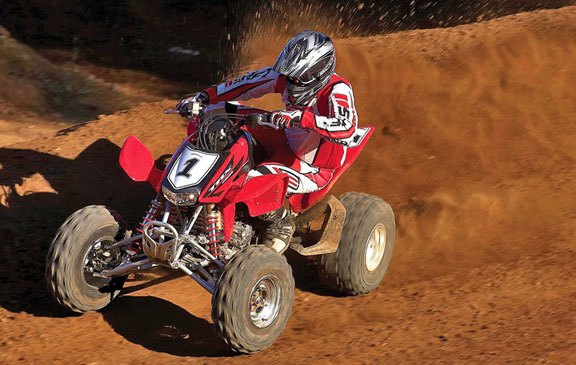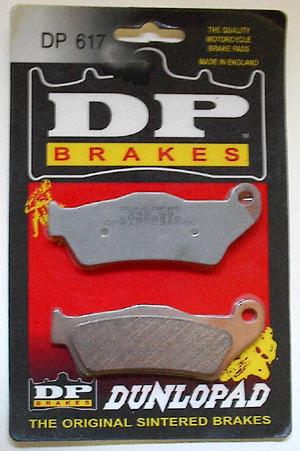Dunlopad Sintered Brake Pad Review
Product Evaluation: DP Sintered OEM Replacement Brake Pads
Copper colored and saved us some major coin
Fact: With proper care, some parts of your ATV are designed to last the life of the machine, others, even if babied, are going to wear and need replacing. Brake pads fall into the latter group. Fortunately they have two things going for them that should put even the most unenthusiastic backyard mechanic’s mind at ease: 1) They’re easy to replace and 2) They’re usually quite affordable.
Case in point: Our trusty but rusty Honda TRX450 was due for some fresh pads all the way around (which is especially impressive considering the OEM units had been serving duty without complaint since the machine was new back in 2006).

We hit the Internet for a little comparative research and ended up ordering DP’s sintered metal brake pads for about per rotor. Although DP markets these products to OEM spec, they are actually quite a bit cheaper than opting to go with actual OEM components (we like that). There is always some deal of debate as to whether to go with sintered (metal) pad compound over organic material or vise versa and here’s our take on that dilemma:
Sintered metal compounds are naturally much harder than their organic material counterparts and hence sacrifice a bit of initial grab and firmer halt in exchange for better wet/dry performance and longer pad life. Organic compounds respond better initially and bring the machine to a stop a bit more effortlessly (grab harder) than metal compound pads at the cost of decreased all-conditions performance and shorter pad life.
Due to the increased wet/ dry performance aspect, resistance to heat fade, and longer pad life, we opted for the sintered pads and installed a pair to each of our machine’s three calipers in 45-minutes flat. After we had the pads installed (no brake line bleeding necessary), we hit the trails of Western NY for some fun-filled evaluation.

The conditions ranged from powdery sand, to hard packed clay to some stagnant water crossings. Here’s what we discovered. Be certain to take the manufacturer’s recommended break-in procedure seriously. Many riders install new pads and or rotors and are surprised to discover that their braking performance actually decreased greatly! This is because break-in transfers material from the pad to all of the microscopic holes in the metal of the rotor. Until this swapping of material is complete, the brakes will feel extremely underpowered.
Once break-in was complete, we noticed a definite “sharpening” of the DP Pads’ ability to slow the machine down in a hurry. Compared to the organic material pads we replaced, the sintered pads felt a little less grabby and a bit more linear in their ability to scrub away speed. Riders who like to lock their wheels and then change direction would probably better off sticking with organic material (which of course DP offers in their OEM Replacement line as well) while riders who simply dab the brakes enough to negotiate corners at high-speed would be wise to follow our decision to run the sintered material.
In all, we came away quite pleased with our investment as the DP Brake Pads easily gave us stock performance at a price break. In fact, thanks to the sintered pad material, we’ve noticed that indeed the rotors are slightly cooler after a hard day’s abuse and even after a few months of exploitation they still look as new as the day they were installed.

If you’re in the market for some new pads, we definitely recommend checking out DP’s replacement brake product line as they offer a variety of compound options, model-fitment choices, and do so cheaper than the OEM.
Head over to: www.dp-brakes.com
